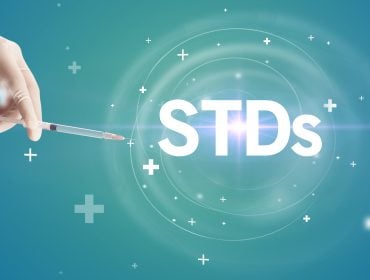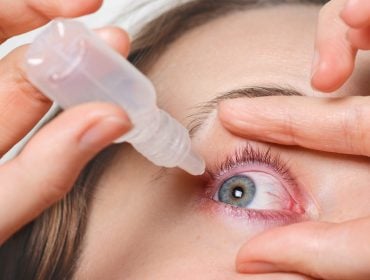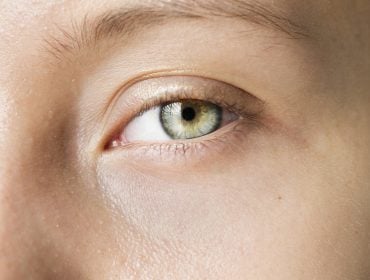Does Herpes Red Light Therapy Work for Outbreaks?
In the quiet of a doctor’s office, under the harsh fluorescence, someone receives unwelcome news: they have herpes. It’s an infection that carries a weighty stigma, often heavier than its actual clinical impact.
As of April 6, 2023, advancements in therapeutic modalities for herpes continue to stir interest, particularly red light therapy, a technique suggestive of potential relief for many who endure recurrent outbreaks.
Unpacking Herpes Red Light Therapy
With a foundation in photobiomodulation, red light therapy administers narrow wavelengths of visible light, primarily in the red to near-infrared spectrum. This non-invasive treatment purports to accelerate cellular processes, potentially aiding in the mitigation of herpes simplex virus (HSV) symptoms, thus offering respite to those affected by recurrent outbreaks.
At its core, herpes red light therapy applies principles similar to those found in other medical uses of light, such as wound healing and pain reduction. By purportedly enhancing local blood flow and modulating inflammatory responses, there is consideration that such therapy may reduce the severity and duration of herpes outbreaks. However, the scientific community continues to examine the depth of these therapeutic effects and the consistency of benefits across individuals with HSV.
Understanding the Technique
Herpes red light therapy harnesses specific light wavelengths to engage with cellular mechanisms. Precise light exposure can incite a cascade within cells, potentially quelling the aggressive nature of HSV outbreaks. It illuminates afflicted areas, aiming to stimulate healing and diminish inflammation, offering sufferers a novel avenue of relief. These low-level light applications target the skin with minimal heat, striving to disrupt the distressing herpes life cycle and alleviate discomfort.
The Science Behind Red Light Benefits
Red light therapy involves wavelengths of light that appear to promote cellular function and energy production, potentially aiding tissue repair and reducing inflammation. These mechanisms are critical when addressing the complexities of herpes simplex virus (HSV) outbreaks, where swift cellular response can impact the healing process.
The therapy activates certain elements within cells, like mitochondria, enhancing their ability to generate ATP, the energy currency of the cell. This bioenergetic boost may facilitate quicker recovery from lesions caused by HSV. Furthermore, red light has been shown to modulate inflammatory mediators within the body, potentially reducing the swelling and discomfort associated with herpes outbreaks. Regulatory proteins (cytokines and chemokines) play pivotal roles in this inflammatory modulation.
Red light’s interaction with the immune system could potentially create an environment less conducive to viral replication and spread. By influencing the activity of immune cells, it can help tilt the balance towards a more regulated response to HSV infections.
Studies suggest, albeit tentatively, that red light therapy might also have direct antiviral effects, although the exact mechanisms remain under investigation. These antiviral properties could be useful in controlling herpes virus activity and the frequency of outbreaks. Despite these insights, the extent of red light’s impact on herpes is still a subject of ongoing research. Clinicians await comprehensive evidence to endorse this therapy as a standard HSV management tool.
Evaluating Efficacy for Herpes Outbreaks
When addressing the efficacy of red light therapy in the context of herpes outbreaks, one must scrutinize the extant scientific literature with discernment. Clinical trials and patient-reported outcomes serve as the empirical bedrock for validating treatment modalities. While preliminary data indicates a potential for red light to ease herpetic symptoms, the scope and rigor of such studies remain variable. A robust body of evidence, consisting of randomized controlled trials with sufficient sample sizes, is essential to ascertain the therapeutic value of red light therapy for herpes simplex virus (HSV) infections, particularly in the attenuation of outbreak severity and frequency.
Clinical Research Insights
Sparse data from smaller studies hints at potential benefits, yet large-scale, rigorous trials are necessary to delineate red light therapy’s efficacy against HSV. Current evidence is inadequate to recommend red light therapy as a reliable HSV treatment modality. Notwithstanding, anecdotal testimonials suggest some individuals experience relief post-treatment, implying potential placebo or genuine therapeutic effects. Recent pilot studies reveal short-term symptom amelioration, yet long-term outcomes remain inadequately explored.
While initial findings are promising, substantiating these requires more comprehensive research, specifically direct comparisons with existing antiviral therapies to assess whether red light offers any additional benefits or synergies. Consequently, the medical community remains cautious, awaiting more conclusive data before integrating red light therapy into standard HSV management protocols.
Patient Experiences and Anecdotal Evidence
Reports from individual cases suggest momentary reduction in discomfort during outbreaks. However, these testimonies lack verification through controlled studies. In this context, patient narratives often depict a subjective perception of reduced lesion severity and healing time. These accounts, while valuable, cannot at current be embraced as empirical evidence. They do reflect, nonetheless, a plea from those affected for innovative and supplemental treatment approaches, beyond the antivirals currently at the forefront of herpes management.
Regrettably, these single-case stories are not statistically robust to validate red light therapy’s efficacy. Without objective measurement, discerning placebo from genuine therapeutic benefit remains challenging. This emphasizes the need for scientifically rigorous investigation to substantiate the claims made by individuals.
Furthermore, enthusiastic endorsements from users of red light therapy for herpes support the continuation of investigation into this practice. Anecdotal successes, if eventually corroborated by scientific rigor, could pave the way for new integrative treatment plans. However, until then, personal accounts remain just that: individual experiences that are not universally applicable or medically endorsed as effective treatments.
Comparing Treatment Options
When weighing the merits of red light therapy against established antiviral therapies, one must evaluate the breadth and rigor of clinical evidence supporting each modality. Acyclovir, valacyclovir, and famciclovir, as standard antiviral agents, have amassed a substantial body of research demonstrating their efficacy in reducing the duration and severity of herpes outbreaks. In contrast, red light therapy, while showing promise in preliminary findings, lacks the extensive clinical trials needed to ascertain its therapeutic value in this context.
Existing treatment protocols for herpes outbreaks are grounded in a pharmacological approach, aiming primarily at the suppression of viral activity. On the other hand, red light therapy purports to offer a non-invasive alternative, possibly with distinct mechanisms of action. Nevertheless, its place in the clinical setting must be established through controlled studies that validate its advantages and delineate any potential risks or limitations.
Conventional Antiviral Remedies
When addressing herpes outbreaks, established antivirals like acyclovir work by inhibiting viral DNA replication. This prevents the herpes virus from multiplying, thereby reducing the outbreak’s progression. These medications must be prescribed by a healthcare professional after proper diagnosis. Typically, these agents are taken orally, but can also be applied topically for localized treatment of herpes lesions.
For more severe cases, intravenous administration can also be utilized to deliver higher concentrations of the antiviral to the affected areas. The efficacy of these antivirals is generally higher when treatment is initiated at the onset of symptoms, emphasizing the importance of early detection and intervention. However, while effective at managing symptoms, these antivirals do not eradicate the herpes virus from the body, leaving the potential for future outbreaks.
Alternative and Complementary Methods
Exploring alternatives, individuals may consider adjunct therapies that propose to offer relief, without entirely replacing conventional medical advice. Red light therapy stands out among such adjunct treatments. Herpes outbreaks cause distress both physically and mentally, prompting searches for efficient soothers. While intriguing, red light therapy should complement, not replace, evidence-based medical treatments.
Safe Use and Potential Risks
Red light therapy must be utilized with meticulous adherence to manufacturer’s guidelines to prevent tissue damage. Inappropriate use can lead to skin irritation or burns, particularly if devices are not FDA-approved or are used improperly.
It is imperative to consult a healthcare professional before commencing red light therapy, especially for individuals with skin conditions, taking photosensitizing medications, or those with a history of skin cancer, as these factors may increase susceptibility to adverse effects. The allure of “non-invasive” and “pain-free” must not eclipse the necessity for diligent research and medical consultation when managing a complex viral infection like herpes.
Guidelines for Red Light Therapy
Red light therapy requires judicious application, with special attention to session duration and frequency.
- Preparation: Ensure the skin is clean and free of any products that can cause photosensitivity.
- Session Duration: Follow the recommended exposure time, typically between 10 to 20 minutes per session.
- Frequency: Engage in red light therapy sessions several times a week as advised, but not consecutively.
- Distance: Maintain the proper distance from the light source as indicated in the user manual.
- Eye Protection: Always wear appropriate eye protection to safeguard against potential damage from light exposure.
- Hydration: Keep skin hydrated post-therapy to maintain its health and resilience.
Treatment adherence and individual response variability must be accounted for in therapy expectations. Careful monitoring of skin reactions post-therapy is imperative to ensure safety and efficacy.
Recognizing and Mitigating Adverse Effects
Adverse effects may present subtly; vigilance is critical for prompt detection and intervention.
- Immediate Discontinuation: Stop red light therapy immediately if adverse effects are noticed.
- Consult a Specialist: Seek medical advice from a healthcare professional experienced in dermatological light therapies.
- Record Symptoms: Document the nature, severity, and duration of adverse reactions to provide detailed information to the specialist.
- Cool Compresses: Apply cool compresses to areas affected by irritation or burns to alleviate discomfort.
- Hydration and Care: Increase skin hydration with gentle emollients and avoid any irritating substances.Proactive communication with a healthcare provider can help navigate through potential side effects.
Implementing safeguards and post-treatment care reduces the risk of serious complications from red light therapy.
Medically Reviewed by J. Frank Martin JR., MD on March 20, 2024
Secure and Confidential
STD testing services
The fastest results possbile - available in 1 to 2 days

Tagged
Categorized As
Author: STD Check Editorial Team
At STDCheck.com, we go to great lengths to ensure quality content. We’re using our own collection of data. It is not bought or made up for “click-bait” purposes. We don’t entice traffic with cheesy graphics or raunchy headlines. Our information is to promote STD testing, educate people, let go of social stigmas, and bring awareness. We also provide a completely confidential atmosphere through private testing. When we produce an article, it is fact-based. We check it with medical advisors that approve it. Our staff consists of doctors and other medical professionals who peer review the content we make available on STDCheck.com. From all over the world, we have sourced the best and the brightest content developers, including medical professionals, marketing engineers, data scientists, content specialists, and media relations.




